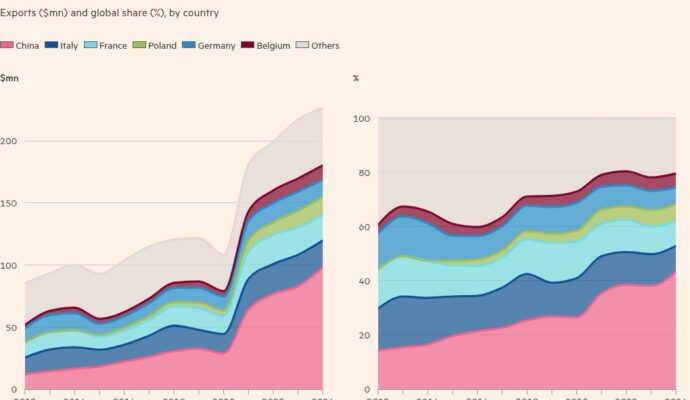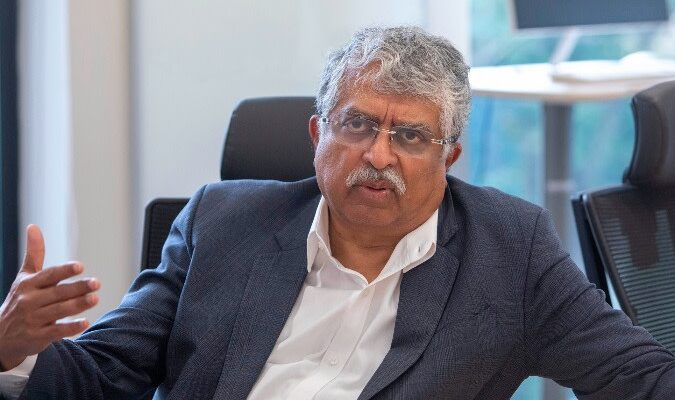Unlock the White House Watch newsletter for free
Your guide to what Trump’s second term means for Washington, business and the world
The US has agreed a trade deal with Japan that will impose 15 per cent tariffs on goods imported into America from the world’s fourth-largest economy.
The 15 per cent levy is lower than the 25 per cent President Donald Trump had threatened in a letter earlier this month, but higher than the 10 per cent rate that had been in force while the countries negotiated.
The higher levies signal that Trump is willing to keep elevated tariffs on major US allies as he ratchets up his aggressive trade policy. Dozens of nations face an August 1 deadline to reach a deal after which Trump has said he will impose higher tariffs.
The US president said Japan would “open” its markets to American cars and rice, which had been sticking points during negotiations between the close allies.
“We just completed a massive Deal with Japan, perhaps the largest Deal ever made,” Trump posted on his Truth Social platform late on Tuesday. “Japan will open their Country to Trade including Cars and Trucks, Rice and certain other Agricultural Products, and other things. Japan will pay Reciprocal Tariffs to the United States of 15%.”
Japanese Prime Minister Shigeru Ishiba said that his country would have auto tariffs reduced to 15 per cent without any quota on the number of imports. “We have been able to achieve a reduction in tariffs on automobiles and auto parts without quantitative restrictions, ahead of the rest of the world,” he said.
A US official confirmed that the US would lower the tariff on Japan’s autos and auto parts to 15 per cent. Japan’s chief negotiator Ryosei Akazawa said steel and aluminium tariffs of 50 per cent were not included in the trade deal.
The automotive sector is a pillar of the Japanese economy and makes up the bulk of its $63bn trade surplus with the US.
Shares in Japanese auto producers surged, with Toyota and Honda rallying more than 10 per cent, while Subaru and Mazda gained more than 15 per cent. The yen weakened 0.2 per cent to ¥146.9 against the dollar after Trump’s announcement, having strengthened earlier in the day. Japan’s benchmark Topix rose 3.1 per cent in mid-morning trading in Tokyo.
Akazawa has engaged in eight rounds of talks with his counterparts, including US commerce secretary Howard Lutnick and US Treasury secretary Scott Bessent, in an effort to hammer out a deal.
Japan is the largest economy to strike a deal with the US since Trump announced his “reciprocal” tariffs in April.
The US announced a deal with the UK earlier this summer, and last week said it had reached an agreement with Indonesia. It has also agreed to de-escalate tariffs with China, and announced deals with Vietnam and the Philippines, although no written text has been produced for either.
Trump said Japan would invest more than half a trillion dollars in the US, without providing details of who would make the investment and over what timeframe.
“Japan will invest, at my direction, $550 Billion Dollars into the United States, which will receive 90% of the Profits,” he said, claiming the inflows would create hundreds of thousands of jobs.
Ishiba said the agreement included investments by Japan in the US to build resilient supply chains in areas such as semiconductors, shipbuilding, aviation, energy and artificial intelligence.
In remarks at the White House after the announcement, Trump added that the US and Japan would enter into a liquefied natural gas joint venture in Alaska.
“I said to the Japanese trade representatives . . . ‘now we’re going to conclude another [deal]’”, Trump said. “They’re forming a joint venture with us in Alaska . . . for the LNG.”
The trade deal comes days after Ishiba’s Liberal Democratic party suffered a setback in an upper house election that severely weakened his ability to lead the country and pass legislation.
While Trump said the US had a “great relationship” with Japan, the trade deal comes as relations between the two allies have become strained over defence spending, which Washington is pressing Tokyo to increase.
American car groups responded cautiously to the news. “American automakers still need to review the details of the US-Japan agreement but any deal that charges a lower tariff for Japanese imports with virtually no US content than the tariff imposed on North American-built vehicles with high US content is a bad deal for US industry and US auto workers,” said Matt Blunt, president of the American Automotive Policy Council, which represents Ford, GM and Stellantis.
Additional reporting by William Sandlund in Hong Kong


